The latest installment in an ongoing series of newly-released material from Terry Laughlin’s unpublished
Overcome the worst Illness - Buddha.
Plant raw Vegan Broccoli, peppers, cucumbers, carrots, beans
vegetables, Dwarf fruit 🍎 🍉 trees in pots and all over the world and
in
Space to eat like birds as planned by NASA, British billionaire Richard
Branson flew into space aboard a Virgin Galactic vessel and Jeff Bezos.
Entire Earth and Space are Amudha SURABI of Manimegalai.
Ashoka planted fruit bearing trees all over his empire.
Potthapada,
perception arises first, and knowledge after. And the arising of
knowledge comes from the arising of perception. One discerns, ‘It’s in
dependence on this that my knowledge has arisen.’ Through this line of
reasoning one can realize how perception arises first, and knowledge
after, and how the arising of knowledge comes from the arising of perception-Buddha
Practice Mindful Swimming - Vimalo
Awakened Ashoka Manimegali Fellow

Swimming Meditation: If only the Buddha had had a swimming pool

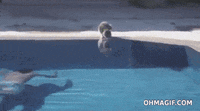

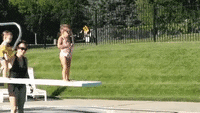
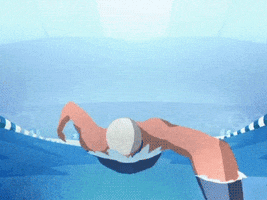
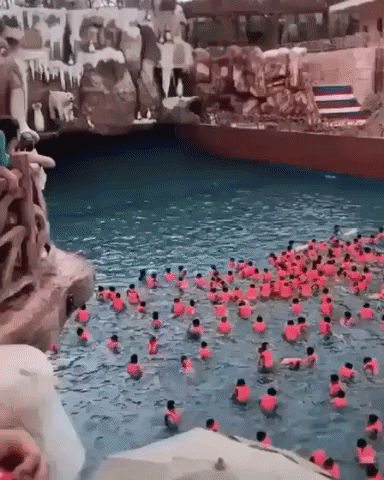
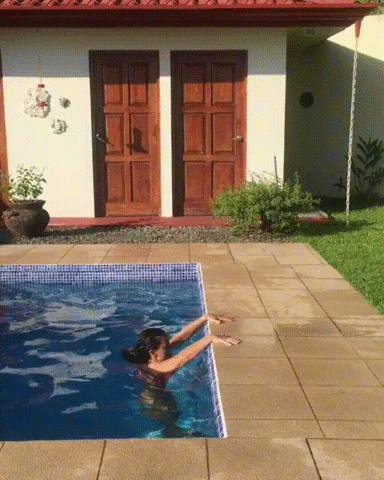
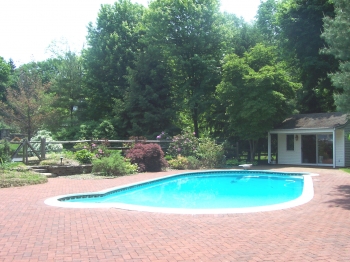
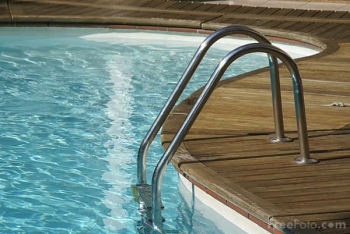
the Buddhist tradition, there is abundant literature on Walking
Meditation. The reason is obvious. Walking does not require any tools,
or preparation or expensive capital investment. This would be the ideal
choice for monks who would normally live a simple life in a simple
environment. But apart from walking, we can practise Mindful Meditation
while going about a lot of other everyday activities.
swimming has become a popular pastime for many. Go to any public or
private swimming pool, and you will note that at different times of the
day, there are regulars who go almost every day at around the same time
and spend a certain period of time swimming. Many of them will tell you
that they have been doing it for years and that if circumstances prevent
them from doing it on any one day, they will feel very uncomfortable
and “incomplete”. I know of a group of people who swim every morning in a
private club swimming pool in Hong Kong. They all attest to the benefit
of regular swimming: better physical health and increased immunity to
minor ailments etc. Most of them swim just before going to work in the
morning and they claim that after the swim, they feel refreshed and
ready to meet the day’s challenge.
swimming is a very lonely game. There is no opponent or partner to play
with you, and you cannot carry on a conversation or communicate with
other people while you are doing it. What these swimmers do every day
is, in fact, spend a certain period of time alone with themselves. For
some people, it is a time to concentrate just on doing something and
forget the world for a while. For others, it may be a time for
reflection and may be for making plans for the rest of the day. What I
have found, however, is that swimming is a perfect way to practise
Vipassana Meditation and work towards the development of Mindfulness.
The
following is a description of how Mindful Meditation can be done while
swimming. This would be especially useful for those people who are
regular swimmers and who would like to make use of this routine to help
them to develop a fuller life.
swim, you obviously need a swimming pool. To have one’s own private
swimming pool is obviously ideal. However, swimming in a public or
private club pool would be equally feasible. The most important thing is
to find a time when you can swim undisturbed along a lane in the pool.
This may mean starting when the pool opens first thing in the morning or
when the crowd is gone after peak hours. Another pre-requisite is that
you must be a reasonably experienced swimmer who can perform the
breaststroke slowly without worrying about the mechanics of the breast
stroke.
most ideal way to swim and meditate is to use the breast stroke because
this swimming stroke allows you to swim relatively slowly and
deliberately.
start with, one must get into the pool slowly and deliberately from the
shallow end. You may first note the intention of getting into the pool
and then note every movement of the body muscle and limb that get you
into it. This would provide a good initiation into a Mindful state.
into the pool, you can note the coolness of the water around your legs
and the sensation of the slight ripples of the water brushing against
your skin. Stand for a few minute, feeling the sensation.
you are ready, note first the intention of going into the water, then
take a deep breath and slowly lower your head into the water and then
slide your whole body into it. When you slide into the water, put you
two hands together with the palms together and extend you arms straight
in front of your head (which would be under water) and stretch them
forward as far a possible. At the same time, you can use your feet to
pushing against the side of the pool so that it can give you the
momentum to glide through the water.
yourself glide forward slowly for a few moments with you hands and feet
fully extended and your whole body in one straight line. Feel the
sensation of water rushing through your hair and brushing your face and
then the rest of the body in a gentle caress. At the same time, exhale
slowly through you mouth by pursing your lips and feel the water bubbles
that you blow out frothing against your face.
you feel that the forward momentum of your body is coming to an end,
perform the traditional breaststroke by pushing your arms straight out
sideways while pressing your palms downwards. Feel the weight of the
water against your arms and palms. Then bending your elbows, bring them
to the sides of your body and bring your palms together towards your
chest. Feel the movements of your arm and shoulder muscles and joints as
you do this. As you press your elbows and pull your upper arms to the
sides of your body, feel the pressure of the water that you have scooped
pushing your upper body up the water. Inhale while your head is up.
Feel the different sensations of air and water on your face. As the
upward push loses momentum, let your head slide back down the water.
the intention of extending your arms straight in front of you again. At
the same time, bend your knees and bring them together as if you would
kneel with your heels facing skywards. Then in a kick, stretch and
extend your legs outwards, then straight behind you again. Feel the
forward momentum created by the kick of your legs as you glide silently
through the water with arms and legs outstretched and your body in a
straight line again. Again note the sensation of water rushing through
your hair and brushing against your body as you glide. Very slowly
exhale as you let the forward momentum run its course. Repeat this
series of movements as you move forward in the pool.
you reach the other side of the pool, touch the wall of the side and
turn your body mindfully, noting first the intention, then the body
movements required to move you around to swim back to the shallow end of
the pool.
a bit of practice, you should know the number of strokes you need to
swim from one end of the pool to the other. For the average swimmer in a
25 metre standard pool, it can be anything between 8 to 13 strokes
depending on your physique. Try to note this number because it may
become useful in your meditation.
the beginner, the easiest way to reach a certain degree of
concentration is to count your strokes as you swim. Thus as you push
your body to glide in the water, count silently: “one…” until the next
stroke when you count “two…” etc, while you glide in the water again
with your body in one straight line. After a little while, you will find
your mind wandering off to other things, like the person swimming
beside you, or some noise that you hear while your head is above water.
Try to note these thoughts and bring yourself gently back to the number
counting and the alternate sensations of water and air on your skin, the
silence under water and movements of the different body muscles as you
swim.
you have mastered the mechanics of swimming meditation, the next step
is to concentrate on the breathing. When you inhale with your head above
water, note the fact that you are inhaling and the movement of your
chest wall and abdomen while you are doing it. Try to imagine the air
going through your whole body. Then as you immerse your head under
water, exhale slowly through your nostrils or mouth and note the fact
that you are exhaling. Thus you concentrate your thoughts just on the
breathing: “I am breathing in slowly…” and then “I am breathing out
slowly…” You may also want to note the short momentary pause in between
each inhalation and exhalation.
should swim for at least 45 minutes in this manner. You will find that
when you first start, your concentration will be very good, but after a
while, your mind will wander off. You should note these thoughts without
judgment and then gently bring yourself back to the breathing. Over the
period of 45 minutes, your mind may sometimes behave much like a monkey
with its tail on fire. But gradually with practice, you will gain a
deeper and deeper level of concentration and you become just aware of
the breathing and nothing else for a progressively longer period of
time.


What Swimming Taught Me About Self-Compassion and Letting Go
Finding “easy speed” in the pool helped writer and meditation teacher
Kelly Barron heal the wound of overachieving and stay loose in the face
of resistance.

I’m no Diana Nyad. But I’m a capable swimmer. During the summer
months, I regularly swim a half-mile in the Pacific Ocean, churning
through waves and unpredictable tides with the self-assurance of a Los
Angeles lifeguard.
So when a gym pal encouraged me to improve my strokes by taking a
lesson with Dan Halladay, a retired UCLA women’s swim team coach, I was
game. I liked the idea of refining my freestyle, polishing my flip
turns, and getting in some intense swim workouts.
As I headed to the pool for my first lesson, I was surprised to feel a
pang of nervous tightness in my chest. I met Dan, a fit 68-year-old
with a genuine smile, at the far end of a lane reserved for lessons. Dan
got down to business quickly, explaining that he’d film my first 50
yards on his iPhone and then get in the water to instruct.
I pulled on my orange swim cap, squared my goggles over my nose, and
slipped into the chlorine-scented water. Taking off with purpose, I
whirled my arms and kicked my feet at a fast clip. I hit the wall,
reversing course with a solid flip turn, and kept pace to finish
strongly.
Dan was waiting at the water’s edge. My friend had told me that no
matter how good a swimmer I thought I was, Dan would offer corrections.
Of course; that’s why I was taking a lesson. But what Dan said surprised
me.
Dan relayed the kind of wisdom that transcends sport: “We only have so many starry nights left.”
“Wow, you’re like a wind-up toy in the water,” he joked. Taking a
more serious tone, he told me: “Relax. Slow down.” Then, Dan relayed the
kind of wisdom that transcends sport: “We only have so many starry
nights left.”
The nervous tightness in my chest blossomed. I felt both embarrassed
and profoundly seen by Dan’s seemingly obvious observation of my Type A
tendencies. The harsh voice of self-criticism rang in my ears: “Why are you trying so hard? You’re not training for the Olympics!”
Then, as it often does when I need it most, my mindfulness practice
showed up. I took a deep breath and softened my body. In the space I
created between my critical thoughts, waves of self-compassion
arose. Pema Chödrön’s sweet refrain of self-acceptance—“allow, allow,
allow”—floated into my mind. Reframing my reactivity with kindness, I
thought how normal it was for me and for all of us to return to our
habitual set points when we try something new, feel stressed, or just
get a bad night’s sleep.
Healing the wound of overachieving
And yet, there in the pool my striving was laid bare. Swimming, like
many sports, can be an embodied metaphor for how we relate to life. I’ve
long equated effort with excellence. More often than not, I’ve made it
happen, rather than let it happen. Sometimes there’s merit in that
hard-nosed approach. It’s made me successful. But it’s also made me
stressed and, at times, woefully unhappy.

Like many people who begin and then develop a lifelong meditation
practice, I began meditating as a way to unwind my tightly wound nervous
system. It’s worked. Even in times of great difficulty, I’m so much
less stressed than I ever have been. The way I muscled myself from one
end of the pool to the other, though, told me that the wound of
overachieving was still open. It also told me that by taking swim
lessons I might have the opportunity to further heal it.
Dan was more than a worthy teacher. In his decades of coaching, he’d
trained some of the best collegiate swimmers in the country, teaching
them how to efficiently glide through the water at maximum speed.
Swimming, it turns out, is highly paradoxical. Slicing through the
water quickly while preserving precious energy requires the
perfect muscular balance between laxity and tension. Swim with too much
effort and you’ll be gassed before the race is over. Make too little
effort and you’ll wallow in the water.
Dan called this razor’s edge of effort “easy speed.”
The feeling of easy speed has
returned to me on dry land. It has appeared at times as a welcome
companion amid uncertainty, preventing me from regressing into
well-worn, stressful habits.
After our brief chat, Dan jumped into the water and stood in front of
me in the shallow end. He grabbed my hands and stretched my arms out in
front of me, lightly moving them in a rhythmic freestyle motion so I
could feel easy speed in my body.
It was a mix of presence, physical ease, and mental relaxation. I knew from other experiences—absorbed concentration during meditation or flow while writing—that the feeling couldn’t be forced. But it could be felt, acknowledged, and trained.
A look of recognition must have registered on my face. Dan smiled. He
then explained that instead of ripping and tearing at the water, I
needed to extend my arms from my shoulders and reach toward an imaginary
pole in front of me that could pull me ahead one stroke at a time.
I made a few fumbling attempts. Dan told me to soften my hands and
loosen my fingers, spreading them like Japanese fans. Loose hands meant
water could slide more readily past me.
The lesson continued with Dan making numerous corrections and me
making numerous bids to embody them. My head was too high in the water. I
dropped my right hand before my left hand reached out in front of me.
It would be better if I rotated my torso more, and so on.
Dan, though, had me at starry nights. Midway through my lesson, I
held my hand up and with the kind of confidence only a recovering
overachiever can muster, I told him: “I think I’ve got it.”
I swam the length of the pool, letting my body fall into a state of
dynamic relaxation as I concentrated on one or two of Dan’s technical
notes. It felt as though I was swimming through peanut butter, barely
making headway across the pool. I missed my thrashing and the illusion
of control striving bestows.
But when I finished my lap, Dan enthusiastically said: “You won’t believe how fast you were motoring.”
Staying loose in the face of resistance
In the swim lessons since my first, Dan has upped the ante, tethering
me to a bungee cord and forcing me to create easy speed against
resistance. Life, like swimming, doesn’t always go smoothly or as we
plan. So I saw the wisdom of training easy speed in the face of
difficulty.
And, in fact, the feeling of easy speed has returned to me on dry
land. It has appeared at times as a welcome companion amid uncertainty,
preventing me from regressing into well-worn, stressful habits. My
striving nature will likely always be a part of me. I’ve become far more
accepting of it. At times, I even appreciate it. It’s what drove me to
take a swim lesson in the first place. But maybe, sometime in the near
future, striving won’t be what propels me forward. Easy speed will be my
new set point.
Mindful Swimming
Jump into the pool with Tonya Nascimento. Experience the rhythm of your
stroke, the comfort of the water holding you up, the rush of the water
past your ears, the craziness of hundreds of people swimming in circles
and spaced just so. Competitive swimmers, like all athletes, can benefit
from practicing in the moment.
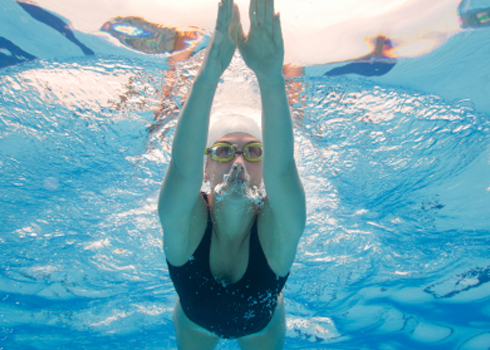
In a year-round sport with only one championship every three or four
months, it can be very easy to lose sight of the purpose for practice
and end up just going through the motions. You put so much time into
repeating the same movements that you don’t really think about them
anymore. You put your body on autopilot and your mind drifts far away
from the pool. But how does being so disconnected affect your
performance?
Just going through the motions happens when you are physically doing
everything you should, but mentally you are playing over the events of
the day, worrying about what your best friend or your crush might be
thinking, planning what you’ll do after practice or on the weekend, or
any number of other possible scenarios that are anything but paying
attention to your swimming. Sometimes your coaches cue you into what you
should be thinking about. They’ll specifically ask for focus on
pushoffs, turns, stroke technique, race strategy, pace, descend, max
out, etc. But sometimes it seems like just another boring set. This is
when you can practice bringing your mind to the motions.
You can start practicing mindfulness by honing in on your
breathing—just the feeling and sound of exhaling fully underwater and
simply drawing air in when your mouth exits the water. Or you can
experience the rhythm of your stroke, the comfort of the water holding
you up, the rush of the water past your ears, the miracle and craziness
of hundreds of people swimming in circles and spaced just so. In other
words, just be, and practice attention by gently drawing your mind back
to your experience when it begins to wander away to all else in your
life.
This is the start of learning how to focus, of learning how to
channel your attention and energy where it needs to be when it needs to
be there. Monotonous sets are not the only instigator of inquisitive
minds. Peter Haberl, senior sport psychologist for the U.S. Olympic
Committee, teaches mindfulness to the U.S. Olympic team due to the
unique distractions present at the Olympic Games.
At all levels, swim meets can have a multitude of distractions that
capture your mind and direct your attention away from your races. Maybe
the team next to you is playing music loudly or publically displaying
team drama. Maybe it is unusually hot or cold outside or the water
tastes strange. Perhaps there is a lengthy delay due to technology or
lightning and you are forced to re-warm up and be ready at a moment’s
notice. These scenarios and more can throw you off your game if you let
your thoughts ramble or exaggerate the significance of what has
happened. The goal of mindfulness is to develop a sense of calm in the
midst of the storm.
It is most helpful to cultivate mindfulness long before making the
Olympic team or competing in your target meet. Next time you practice,
become cognizant of what you are doing the moment you are doing it—your
breath, your movement, your thoughts. Be present.
A helpful exercise is to image being able to watch yourself. My
teammate Betsy Nagy once told me, “When I was little I thought it was
like flying because you see the bottom of the pool, but you’re not on
it.” You can try to sense your body flying through the water using only
the propulsion of your arms and legs. I remember how it felt in high
school to swim under a black star-studded sky, somewhat surreal as I
flew through chilly liquid, over the black line, moving from my own
effort. I remember recognizing this feeling as I experienced it. Try to
recognize your time swimming as a special time, somehow just for you, in
spite of all your teammates engaged in the same activity. In other
words, become aware of your surroundings and your bodily movement,
without thought and without judgment, but rather with an attitude of
serenity, control, and even awe.
From awareness of yourself swimming in practice, you can move to
awareness of yourself during the many elements of swim meets—preparation
for warm-ups, warm-ups, the waiting period before an event, the event,
response to the event, talking to your coach, warming down, and more. By
remaining concerned only with the moment, you can reduce anxiety,
distractions, fatigue, and pain.
It’s a huge challenge. Perhaps now is the perfect time to make it a
regular part of your practice. When the pressure seems overwhelming and
when the craziness of a swim meet steals your attention, back away
mentally. When your goals seem far away and the set seems purposeless,
seize the moment. Perhaps now is the time to quit letting the
environment determine your performance and to start taking control of
the present. Perhaps now is the time to quit just going through the
motions and to start living them.
This article is reprinted with the express written consent of Swimming World.
Tonya Nascimento is a doctorate student in the sport
psychology program at Florida State University. She was a competitive
swimmer for 20 years, during which she swam for FSU. She also coached
Maverick Aquatics for eight years and the Niceville High School swim
team for four years.

recommend swimming as one of the best exercises around, and for good
reason. When we swim, the main muscle groups all go to work in a way
that doesn’t put undue stress on the body. This makes it a wholesome
aerobic exercise for young and old alike. The health benefits of this
kind of workout include:
people enjoy swimming because it’s so refreshing and good for you. But
you could go the extra lap and practice mindful swimming – and get the
best of both worlds. With mindful swimming, instead of just focusing on
reaching a certain goal, you pay full attention to the exercise and the
sensations experienced as you swim. Extending your mindfulness practice
into swimming is a great way to break up the routine of sitting
meditation.
answer depends on the swimmer! Meditation is about awareness, and it
might be argued that awareness is possible in every situation, including
swimming. With mindful swimming, you can enjoy the current moment
without worrying about any stressful issues at work, home or elsewhere.
of mindlessly plunging into the water and doing your laps, take a few
moments to formulate the intention of being entirely present in the
water. Once you’ve begun swimming, see if you can maintain awareness of
the here and now. Enjoy the feeling of buoyancy as you glide across the
pool and take note of other physical sensations – wetness, scent, sound,
etc. Remain present as your arms enter and leave the water, your legs
propel your body forward and your head follows the rhythm of the
movement. How does it feel? Acknowledging sensations that you don’t
usually notice is part of what makes swimming as meditation so
enjoyable. Alternatively, when swimming laps or floating, you may also
choose to focus on your breath.
you meditate, the mind is no longer bound by the anxieties and stresses
that usually take up so much mental space. Instead, the mind is
spacious and refreshed, and you feel rejuvenated. This naturally
inspires you to work on bettering yourself and improving the lives of
others. By incorporating the exercise of swimming as meditation into
your mindfulness regime, you train in extending your “on-the-cushion”
practice into your everyday life.
swimmers tend to repeat the same movements every time they train. It’s
easy for them to give their minds free rein to wander as they swim
instead of being mindfully aware of their breath and physical
sensations. In her article “Mindful Swimming” in Swimming World
Magazine, former competitive swimmer Tonya Nascimento believes that
mindfulness can help athletes while training as well as while competing.
“At all levels, swim meets can have a multitude of distractions that
capture your mind and direct your attention away from your races. [ …]
The goal of mindfulness is to develop a sense of calm in the midst of
the storm; it is to gain control over one’s own thoughts. By becoming
aware of your thoughts, you can decide to let go of those thoughts that
hinder your performance, and decide to concentrate on only those
thoughts that help you improve,” she writes.
number of national swimming teams (including the U.S. Olympic team)
have incorporated mindfulness in their training sessions. The feedback
has been positive: athletes have reported improved performances when
they focus on being fully present rather than focusing on the goal
(winning!) alone. Mindful presence helps swimmers maintain balance, and
balance fosters peak performance.
trying mindful swimming, make sure your swimming level is good enough.
Once you get the groove of it, you’ll realize that swimming and
meditation are an awesome match. Most importantly, remember that
swimming – and meditating – should be enjoyable!
reading this article it’s clear that you’re interested in the practice
of meditation and its results: experiencing genuine joy and well-being.
You’ve come to the right place. Mindworks is a non-profit with a mission
to share the most authentic and proven meditation guidance to you and
our worldwide community.
meditation practice develops the most fundamental axis of our being,
it’s essential to rely on clear, progressive and genuine meditation
methods from authentic guides. In order to fully transmit to you the
full potential of genuine meditation, we created the 9-level Mindworks
Journey to Well-Being.
so sure you’ll benefit we now offer you Mindworks Journey Level 1:
Meditation Fundamentals course for Free. Click the link below to learn
more.
your potential for a meaningful life, through the practice of
meditation. Take our most popular meditation course for FREE.
Fundamentals stage of the Mindworks Journey is the entrance to
Mindworks’ complete online meditation method. Beyond the simple goal of
learning how to meditate, you’ll be taught accessible, progressive
practices that will catapult you forward on your journey to
transformation. If you’re already familiar with mindfulness meditation,
this level will help you rekindle your connection to practice and build a
consistent daily routine.
for a limited time we are offering this 14-day online meditation course
COMPLETELY FREE! Join the thousands of people who’ve signed up for
this course to see if you agree that this is the best free online
meditation course out there.
solid foundation in meditation connects you with the mind’s natural
spaciousness and fosters awareness of how to live in the moment. This
awareness promotes better decision-making and helps you prioritize and
focus on what’s important in your life. By opening the door to the
benefits of meditation, this level of the Journey inspires you to keep
exploring.
1: Fundamentals is the first stage of the Journey’s Foundation program.
The 14-day course takes 20 minutes a day. Here, the meditation
instructions center on the initial experience of mindfulness: training
in bringing the mind back to the present moment.
Motivation via Mind Talk videos with our awesome Mind Trainers that
encourage you to explore your mind and advance your practice
am enjoying my Mindworks Journey tremendously and know it I taking me
in a wonderful new direction. It feels like I am on a pilgrimage to
rediscover my true self. “
9 Level Path to Transformation was amazing and helped me build a
strong, consistent meditation foundation and I loved the whole journey.
The program has helped me survive this pandemic and changed my life.
Deep gratitude! I love Mindworks! “
a profusion of free meditation courses on the market today. How can you
distinguish between all of the options? Here are some tips to help you
decide on the best free online meditation course.
of all, the course should be the one that’s right for you. Why do you
want to learn to meditate? Your motivation will guide your selection
process. Some people are drawn to the mental and physical health
benefits of meditation while others are interested in learning how to
meditate for anxiety control. Some are sold on the benefits of
mindfulness meditation and others want to combine meditation and yoga.
Some sense that meditation is the key to improving relationships and
others are inspired by the spiritual benefits of meditation. Some people
are interested in self-exploration, discovery and personal
transformation. Many of these motivations will be satisfied by this
course that delves into the essentials of meditation.
you’re clear on your motivation, identify the online meditation courses
that match your goals. Just because someone offers free meditation
videos, meditation scripts or downloads doesn’t make the time you spend
worthwhile. Make sure you’re choosing a system you can trust,
well-presented and effective. Pick a meditation course taught by genuine
practitioners who are more interested in your welfare than in marketing
and sales. Non-profit groups offering meditation may be more beneficial
than slick, expensive for-profit programs. Experienced practitioners
agree that the best way to learn mindfulness and other forms of
meditation is to follow a progressive, structured meditation course with
step-by-step instructions and easy-to-follow guided meditations. As for
the top free meditation courses and tutorials online, Mindworks is a
leader in the field with its free Level 1: Fundamentals Course.
courses are part of a complete online meditation method that integrate
tried and true genuine traditional meditation practices on a learning
platform that is easy to use. If you’re serious about starting or
deepening a meditation

What our happy customers say:
morning ‘hits’ of 10 minutes of meditation practice, along with the
short talks, have made it easier for me to manage during this crazy
time! I’m hooked!”

has exploded my meditation practice in so many ways. I sincerely
encourage anyone who wants to grow in their practice to see where it
takes you. “


Mind Trainers Featured In This Course
What our happy customers say:
am enjoying my Mindworks Journey tremendously and know it I taking me
in a wonderful new direction. It feels like I am on a pilgrimage to
rediscover my true self. “

9 Level Path to Transformation was amazing and helped me build a
strong, consistent meditation foundation and I loved the whole journey.
The program has helped me survive this pandemic and changed my life.
Deep gratitude! I love Mindworks! “

How do I find the best free online meditation course?
There’s
a profusion of free meditation courses on the market today. How can you
distinguish between all of the options? Here are some tips to help you
decide on the best free online meditation course.
First of all,
the course should be the one that’s right for you. Why do you want to
learn to meditate? Your motivation will guide your selection process.
Some people are drawn to the mental and physical health benefits of
meditation while others are interested in learning how to meditate for
anxiety control. Some are sold on the benefits of mindfulness meditation
and others want to combine meditation and yoga. Some sense that
meditation is the key to improving relationships and others are inspired
by the spiritual benefits of meditation. Some people are interested in
self-exploration, discovery and personal transformation. Many of these
motivations will be satisfied by this course that delves into the
essentials of meditation.
Once you’re clear on your motivation,
identify the online meditation courses that match your goals. Just
because someone offers free meditation videos, meditation scripts or
downloads doesn’t make the time you spend worthwhile. Make sure you’re
choosing a system you can trust, well-presented and effective. Pick a
meditation course taught by genuine practitioners who are more
interested in your welfare than in marketing and sales. Non-profit
groups offering meditation may be more beneficial than slick, expensive
for-profit programs. Experienced practitioners agree that the best way
to learn mindfulness and other forms of meditation is to follow a
progressive, structured meditation course with step-by-step instructions
and easy-to-follow guided meditations. As for the top free meditation
courses and tutorials online, Mindworks is a leader in the field with
its free Level 1: Fundamentals Course.
Mindworks courses are part
of a complete online meditation method that integrate tried and true
genuine traditional meditation practices on a learning platform that is
easy to use. If you’re serious about starting or deepening a meditation
practice, Level 1: Meditation Fundamentals is one of the best online
meditation courses available. Hey, and it’s free.

The six stages of a mindful swim
- Words: Tessa Wardley
- Images: Iona Barr, Jenny Rice
•
Iona Barr
Mindfulness is the practise of being fully
engaged in the present moment, pushing all other distractions to the
side as you focus on what you are doing right here and right now; making
the most of life and really living in the moment.
When we go for a dip in the wild world we
have the perfect opportunity to engage with ourselves in the present
moment. The water and the wildlife combine with the physical activity of
swimming to provide the perfect combination of factors to help
disengage with the frustrations of the past and the worries of the
future. By engaging with the following steps you can make the most of
your swim and be well on the path to zen.

STAGE 1 – On your way
As you travel to your swim savour the anticipation and make your
preparations and approach into a meaningful ritual. Think about why you
have chosen to swim and what steps you have taken to make space in your
day for this adventure. Think about your journey to the water and dwell a
moment on the water’s journey here – clouds, rock layers, rain, snow,
ocean currents, river channels…
STAGE 2 – Stripping off
As you get to your wild swim take your time and enjoy every sensation
as it develops. Take a moment to transition from your everyday self
into a mindful swimming god or goddess. As you shed your clothes, shed
the stresses and constraints those clothes may signify, peel off the
layers and get ready to leave it all behind. Focus on the sensations of
air on the skin and the earth between your toes. Think about how you are
feeling… you may feel excited or maybe you are anxious and
trepidatious, whatever the sensation they are beginning to displace the
distractions of everyday life and you haven’t even hit the water yet.

Stage 3 – Teetering on the edge
Before you set off on your swim stop on the edge of the water, close
your eyes and take a moment to breath. Breathing is one of the most
automatic of actions, life sustaining but often unnoticed; in-out,
in-out. Breathing control is fundamental to meditation and for swimming.
The first action of entering cold water is often to lose our breathing
rhythm, we tense up and our breathing becomes shallow and irregular,
sometimes we even forget to breath for a bit. Stand on the bank and
focus on keeping your breathing regular and even, in through the nose
and out through the mouth. As you breath try counting your breaths
one-in, two-out, three-in, four-out…. Be aware of the air flooding into
your body and expanding your chest.
Stage 4 – Get Immersed
As you relax into a steady breathing rhythm open your eyes and start
to get in the water. Try to maintain your breathing pattern as you lower
yourself in. Notice any tension around your diaphragm and chest and
try to keep all the breathing muscles relaxed, lengthen your neck, push
out your chest and allow the air to flow smoothly in to your lungs. Feel
the sensation of the water on your skin and wriggle your toes into the
ground to give yourself a good solid base. Wild swimming challenges the
body and the mind in ways we otherwise rarely experience, so start
slowly and enjoy every challenge as it presents itself. Feel every
sensation and log it away as a bright memory to be taken home and
cherished, to bring out and dwell on at the end of the day.

Stage 5 – Get swimming
Once you have relaxed and found a calm rhythm in your breathing,
think about lifting your feet from the bottom, finding your buoyancy and
starting to swim. Continue to focus on your breathing. Feel the air
expanding your lungs as you breath in and bubbling though the water as
your breath out. Whatever your stroke, you need to find your rhythm to
get the most from your swim. Swimming strokes that flow smoothly and
rhythmically are the fastest and most energy efficient; they are also
essential to your mindfulness practice and to getting in the flow. If it
helps swim to the rhythm of a song. Let the beat dictate your breathing
and fit your arm stroke to your breathing and the leg cadence will take
care of itself. Enjoy the marriage of your breathing and the stroke
with the beat of the music. Stretch out and have fun, just go with the
flow.
Stage 6 – The afterglow
After your swim is when you will really start to reap the rewards.
Positive feelings flood your system as the endorphins surge around your
body converting your pre-swim angst into post swim elation. Feelings of
well-being and positivity wash over you as you stretch out on the bank.
Focus on these emotions, try to keep them with you as long as possible,
but know that whenever you swim you will always leave the water feeling
better than you did when you arrived. Just knowing that those positive
feelings are only a dip away can be immensely reassuring.
The Mindful Art of Wild Swimming by Tessa Wardley is published by Leaping Hare Press. For more about her book visit our noticeboard story Practice Mindful Swimming with Tessa Wardley.
Words: Tessa Wardley
Images: Iona Barr, Jenny
Rice
https://www.totalimmersion.net/blog/stroke-thoughts-practice-set-mindful-swimming/

Stroke Thoughts: A Practice Set for Mindful Swimming
by Total Immersion
archives
The role of mindfulness is a
primary theme that underpins the Total Immersion approach to practicing
and teaching swimming, and was a significant influence on Terry’s work
over the years. Even when Terry was not overtly highlighting mindfulness
as the explicit focus, the importance of mindful attention was always
implicit in his nuanced exploration of the minute details in stroke
mechanics and the habits of deliberate practice (a topic discussed in last week’s blog). He recognized that the cultivation of mindfulness is a key element in the pursuit of mastery and excellence in any skill.
In addition to the obvious benefits
of improved stroke efficiency and faster swimming with more graceful
ease, Terry also grew to appreciate the salutary mental/emotional
effects of practicing mindful movement. In May of 2017 he contributed a
column entitled, “How to Be Mindful While Swimming,”
to the “Meditation for Real Life” series in the the N.Y. Times. A great
read, that short column focused on swimming as a moving meditation, and
gave pithy guidance for practicing present moment attention and sensory
awareness in swimming. However, it was an abridged and tightly-edited
version of a more expanded article. For clarity and brevity, much of his
original draft had to be cut from the final edit, including a useful
practice set with more details on technique points. This post, on
swimming mindfully with specific “stroke thoughts” (aka: focal points)
is the first publication of Terry’s original, unabridged article. Enjoy!
Swimming often devolves into
autopilot behavior in which you focus only on getting in the distance
you’ve planned, or “following the black line.” This is a lost
opportunity. Swimming with a targeted mental focus can also be an
immensely rewarding opportunity to practice mindfulness—and a proven way
to improve your efficiency. The average swimmer has an almost limitless
improvement upside. By swimming mindfully with specific Stroke
Thoughts, we can transform routine lap sessions into an immersive form
of moving meditation, and an unmatched method of continuous technique
refinement.
Begin each practice with an intention to be fully present as you swim, consciously focused on improving your swimming, rather than just getting laps in. With this mindset of mastery, your goal is to be a better swimmer when you leave the pool.
Start with 4 x 25y/m freestyle repeats,
swimming normally. Count strokes on each 25– which itself is an
exercise in paying attention– and rate the overall quality of your
experience on a scale from 1 to 5 (1= unfocused; 5= deeply focused).
Then, swim a series of 4 to 8 x 25y/m
with each of the suggested Stroke Thoughts outlined below. As you begin
swimming, tune your sensory awareness by focusing on each individual
stroke. Notice the feeling of the wetness on your skin. Feel yourself —
buoyant — moving through water. During rest breaks, take
cleansing/centering breaths and continue “swimming mentally” by
visualizing your Stroke Thought.
Photo courtesy of Bob Fagan and USIA Video.
Stroke Thought #1: Focus on your breath.
As you take breaths, shift your focus from a stroke rhythm to a
breathing rhythm, noticing the unbroken alternation of in-breaths and
out-breaths. How does your body accommodate to this rhythm? Notice
details from inhalation to exhalation, such as: frequency of breath
(e.g. bilateral breathing every 3 strokes vs. breathing every other
stroke on the same side), volume and rate of air exchanged (long, slow
breaths vs. short, fast breaths), and ratio of nose breathing to mouth
breathing. Observe how sustainable your breath management is for the
pace you’ve set. Do you exhale too fast and run out of air? Or
conversely, hold your breath, creating a buildup of CO2 in your lungs
and an unpleasant tightness in the chest? Experiment with different
variables as you aim to find a sustainable, steady breathing rhythm that
is comfortable for you.
Stroke Thought #2: Align head and spine.
Completely release the weight of your head to be supported by the
water. Head and spine should better align as a result. To reinforce,
visualize being towed forward by a line attached to the top of your
head, so your head-spine line is both lengthening and always moving in
the direction you want to travel.
Stroke Thought #3: Cut a Letter Slot.
As you continue with tuned sensory awareness of your stroke, focus on
the feel of your arms entering and exiting the water. Feel cool, dry air
on your arms briefly; then the wet thickness of the water for a longer
period of submersion. Enter your hand (closer to your shoulder than
normal) with fingers down to cut a slot (like the letter slot at the
post office) in the surface. Forearm should follow hand through that
slot. As you do this, observe the sound of your swimming– listen for
noise, hearing any splashes or bubbles. Strive to eliminate both. How
quietly can you swim?
Stroke Thought #4: Form Lines.
After your hand slides through the slot, reach it fully forward, then
line up that side of your body—fingertips to toes—behind the lead arm.
Continue stroking, forming right-and-left-side lines with each stroke.
Assess how long, straight, and sleek each line is. Notice how far your
arms are reaching in front of you and strive to feel “taller” and more
streamlined with each stroke.
Finish with 4 x 25. Choose your
favorite Stroke Thought—or a blend of two or more. On your final 25,
count strokes and rate the overall quality of your experience to compare
with your initial series. On a scale of 1 to 5, how would you rate the
quality and consistency of your focus during this set? In a sentence,
can you articulate any change in the feel of your stroke?
As you complete your swim, be grateful for your ability to merge mind and body, moving like water.
Related blog posts on swimming and mindfulness:


Ananda asked the Buddha whether all the previous Samma Sambuddha were
teaching the same instructions as Gotama Buddha. The Buddha’s reply
became one of the most popular Dhammapada verse, No. 183 (Chapter XIV:4)
commonly translated as “Avoid Evil, Do Good, Purify Mind - this is the
teaching of the Buddhas” and apply a more precise translation by Ven.
Dr. M. Punnaji which is “Abandon All Evil Ways, Enter The Good Life,
Purify One’s Mind - The is the teaching of the Buddhas”.
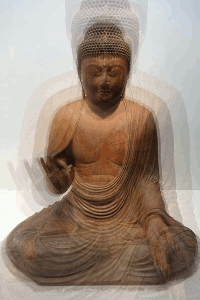
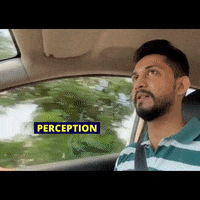
야채, 난쟁이 열매 🍎 🍉 냄비와 전세계의 나무와
NASA가 계획 한 바와 같이 새들처럼 먹을 공간에서, 영국 억만 장자 리차드 브랜슨은 버진 은하계와 제프 베조스를 타고 우주로 날아갔습니다. 전체 지구와 공간은 Manimegalai의 Amudha Sarabi입니다.
Ashoka는 그의 제국을 통해 나무를 낳은 과일을 심었습니다. Potthapada, 지각은 먼저 생겨났습니다. 지식의 발생은 인식의 발생으로 인한 것입니다. 한 명의 분별은 ‘내 지식이 발생 했음에는 의존하고 있습니다.이 추론의 라인을 통해 지식이 얼마나 인식을 일으키는 지 알 수 있습니다.
그 후, 지식의 발생이 지각 - 부처의 발생으로 인한 것 사기에 마음가짐 수영 - Vimalo.
Ashoka Manimegali Awakened Ashoka Manimegali 님

sorry we meant 5 Reasons Why We Love Regina Phalange.To binge watch
Friends for the bazillionth time, head on over to Netflix!Follow Netflix
India on:Web…
Zanîn bi hevdemî radibe?

Zanîn yekem û pereserê piştî; an peressence bikin &
Zanîn bi hevdemî radibe? Potthapada, perception yekem derdikeve, û
zanîna piştî.
Û rabûna zanînê ji rabûna
lêhayî. Yek cûdahiyan, ‘Ew bi vê yekê ve girêdayî ye ku zanîna min çêbûye.
and welcome to a new series of 5 prefabricated houses that are stand
out of the crowd. A few stunning houses brought my attention and are
worth showcasing.
goal is to bring the best selected small houses in several episodes.
Tiny houses movement is getting more attention over the recent years.
Therefore, it is great to get idea on what is available from the
architectural and design perspectives.
Astronaut
Scott Kelly nursed dying space zinnias back to health on the
International Space Station. He photographed a bouquet of the flowers in
the space station’s cupola against the backdrop of Earth and shared the
photo to his Instagram for Valentine’s Day 2016.
Credits: NASA/Scott Kelly
Таза тазалоону жакшы тазалаңыз Эң жаман ооруну жеңүү - Будда.

Жашылчалар, жашылча, дүйнө жүзүндөгү жашылчалар Бүт жер жана мейкиндик - Манимегалайдын Амудхаби.
Ашока империясынын үстүнөн бак-дарактарды отургузган жемиш берген. Поттамында, алгач кабылдоо биринчи орунга чыгат жана андан кийин билим алат. Билимдин келип чыгышы кабылдоонун келип чыгышынан келип чыгат. Бир
жолу түшүнүк, “Бул менин билимим келип чыкканына көз каранды.” Бул ой
жүгүртүүсүнүн бул түшүнүгү биринчи кездеме, билимдин башталышын кабыл
алуу жөнүндө билимдин келип чыгышын кандайча кабыл алат жана Будда Сууда сүзүү машыгыңыз - Вимало
Асхока манимегали
при рождении имя Сиддхартха Гаутама, он позже стал именоваться Буддой и
Полностью совершенным буддой. Его также называют: Татхагата, Бхагаван,
Сугата, Джина, Локаджьештха и др.
Шакьямуни — духовный учитель, основатель буддизма.Получив при рождении
имя Сиддхартха Гаутама, он позже стал именоваться Буддой и Полностью
совершенным…

















had developed Spondalisis due to my weight. The nureosurgen said I had
to undergo slip disc operation otherwise i would be paralised. Due to
severe pain I decided go for the surgery. One of the doctors suggested
that I may go for swimming. I did so and I got relieved from the severe
pain. Hence I continue to swim and that is the best meditation for
mindfulness. At the age of 80 I have won gold, silver bronze medal in
National and International Masters swimming meets and also did Ocean
swimming at Sri Lankha. I wish to cross English Channel and go to space
to plant vegetables and fruits to over come hunger the worst illness as
said by the Buddha. Ashoka the Great planted frruit bearing trees
throughout his Empire. Manimegali did so with her Amudh Surabhi. The
whole Universe is a Amudha Surabhi
have being swimming for over 10 years now and i have never thought of
it as meditation practice. This year, after a painful breakup, i started
taking yoga classes and meditation at home. After a while a realized i
could experience similar sensations with my 3 practices. this is helping
me a lot with my emotional healing and mindfullness.
Rogerio, I hope things are working out for you now and these three
things are helping to bring you some peace. Swimming is a great practice
beacuase unlike the author I swim freestyle/ front crawl, which
although much faster, challenges me to find the still point. After a
while I naturally tune out the hustle and bustle of a faster stroke. I
love yoga to.
breathing is simply the focal point of the “idea” of swimming
mindfully. This is important as there are many facets or parts of the
stroke -many of which we can concentrate, however the breathing
especially the out breath is something we can rely on to occur -no
matter what- when swimming. We can count on it as the framework of
mindfully moving through the water. Thank you, Angelo Mauceri
appreciate your article very much as a swimmer. Can you explain your
last line, of why it is important to get to the point where we’re only
focused on our breathing. I mean, I have an idea but I would like to
hear your enlightened view on this…